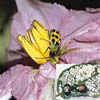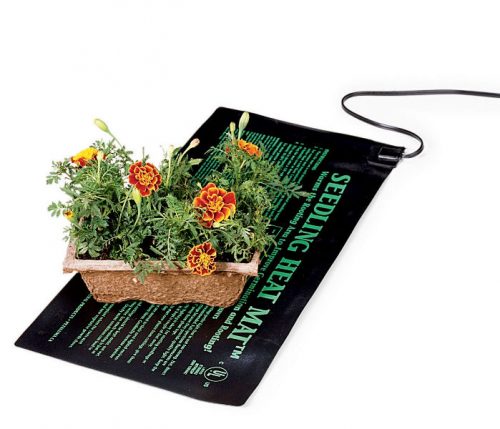Another great question came in this week from a fellow Gardenerd:” I’m pretty sure we have a variety of stinkbugs including harlequin bugs. Any suggestions after destroying infested plants and accompanying bugs?”
First things first. I just found a really great website featuring a insect photo catalog to help you identify your critters. Simply hover over the diagrams on the left hand side to find the right category of insect. You will find Stinkbugs and Harlequin bugs under the category of “True Bugs”. I’ve been looking for a complete photo library of bugs for years and this one is the best I’ve seen yet. Be sure to bookmark that for later use.
The Bug Guide
http://bugguide.net/node/view/15740
Now on to your bug problems. For those who thankfully aren’t familiar with these pesky creatures, stinkbugs and harlequin bugs have needle like mouths that literally suck the life out of plants, causing them to wilt and die. These insects have a short life span – between 5-11 weeks – so they work very hard to reproduce. They lay their round little black and white eggs on the underside of leaves or other undisturbed places. I have researched a few options for getting rid of them, some of which work in small scale gardening:
One solution is Liquid Rotenone/Pyrethrin which can be used sparingly (even though Pyrethrins are considered an organic means of pest control, the jury is still out with me about its effects when used on a large scale). You can click on the photo below to purchase it from Gardens Alive.

Sabadilla is another organic pesticide that comes from ground-up lily seeds. It is one of the least toxic EPA approved organic pest controls, but for some reason, it hasn’t been widely available. I found a 50 lb. bag available from Groworganic.com, but I don’t think you want that much of it. It is a contact and stomach poison to stinkbugs and other True Bugs. Ironically, it is also used in homeopathic remedies for sinus infections. Um….interesting.
Another suggestion is to create a trap crop to attract the insects to it. This is mostly recommended for large scale crops, after which the trap crop is covered with cloth to contain the insects and then burned. The small scale version of this is to place a board near the infected plants. The insects will congregate under the board, and in the early morning you can visit your garden, overturn the board and destroy the pests.
Finally, the most frequent method of control that I found for stinkbugs is the good old fashioned hand-picking method. Go out in the morning on a hunt for these creatures with spotted backs and smash them. They like to hang out near decomposing matter – i.e. rotting lettuce leaves, withering arugula, etc. Stinkbugs in their earlier stages of life – as nymphs – can’t fly – so they’re easier to catch. Full grown bugs have wings and can come and go as they please. So – the more diligent you are about tracking down the insects early on, the better your chances of breaking the life cycle and eliminating your problem.
You did the right thing by throwing away the infested plants. Keep your eyes peeled for tiny organized rows of black and white eggs on the undersides of your leaves. Also, keep freshening your soil with a rake or hand trowel, as you are likely to find them on ground level as well.
Thanks for writing in and keep us posted on your results.


